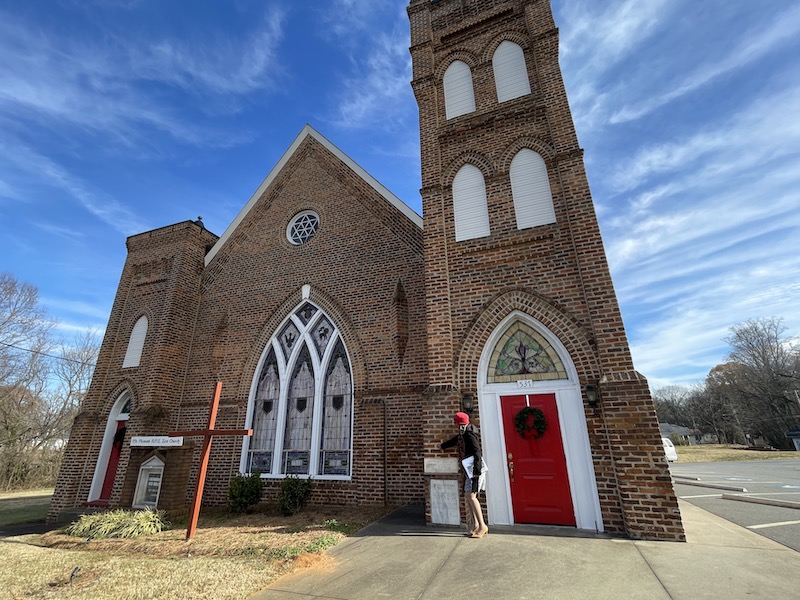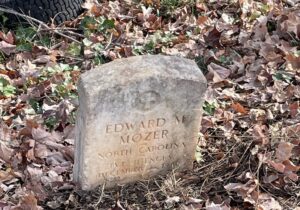
BY KARISSA MILLER
Lisa Mozer is leading a series of tours in an effort to teach residents about Statesville’s Black Historic District and to bring awareness about the need to add more local landmarks to the National Historic Registry.
Mozer recently led a small tour in which she spotlighted the history of Mt. Pleasant AME Zion Church. The church, located at 537 S. Center Street, was built in 1868, three years after slavery was abolished.
The two temple structures on the church are usually the same size, but the ones on Mt. Pleasant aren’t, Mozer explained. She also noted that the brick pattern is not symmetrical because the church was constructed by residents.
“Although it was very skillful, it was community labor or a labor of love,” she said.
The building has since undergone repairs. An addition was built in the 1980s.
“This is a prized possession,” Mozer said. “This is the only landmark of African American culture that is currently on the North Carolina Historical Registry.”
While Mt. Pleasant AME Zion Church is significant, Mozer said there other landmarks in Statesville that are worthy of being recognized on the National Historical Registry. This type of recognition can help with efforts to protect and preserve these landmarks.
Mozer explained that she is passionate about having these places recognized because of her family ties to Statesville.
“Statesville is home. My parents’ family and my mother’s family are from Statesville. Some of the time in my schooling I was in Charlotte, but my mom moved back to Statesville. So Statesville is home,” she said.

Other landmarks on Mozer’s tour include:
♦ The Holliday House at 241 Garfield Street. Dr. Robert Holliday was a prominent physician in the community and his wife Mary Charlton Holliday was the school supervisor over Black schools in the county. Mozer said that in modern times they would be considered a “power couple.”
♦ Morningside School site on Garfield Street. The school was built in 1891.
♦ The Green Street Cemetery, which is the largest African American cemetery in Statesville. Mozer said it reached capacity in the 1940s and has more than 2,000 unmarked graves.
♦ Billingsley Memorial Academy site. In 1910, Mrs. E.S. Billingsley gave $1,100 to help build the Billingsley Memorial Academy on South Green Street as a school for Black children. The academy was supported by the Presbyterian Church in the North until it closed in the 1930s due to the Depression.
According to Mozer, these sites are documented, researched and recognized as historically significant.
Tours
Mozer is providing weekly ticketed public tours on Friday, Saturday, and Sunday at 2 p.m. For more information, email LFMozer9611@gmail.com.




Good for her for leading the recognition charge on these long overlooked community treasures. Keep it up!
“This is a prized possession,” Mozer said. “This is the only landmark of African American culture that is currently on the North Carolina Historical Registry.”
I think Mozer was misquoted here or meant “in Iredell County.” There are a handful of other A.M.E churches on the register. Watkins Chapel in Mooresville has been submitted but I don’t know what its status is.
What address was the Billingsley Memorial Academy located?